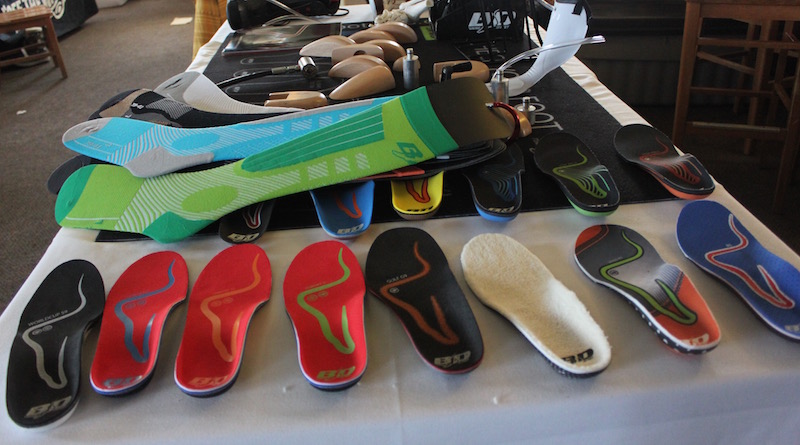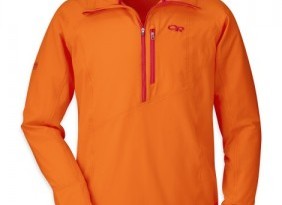How to buy the best ski boots?
Finding the perfect pair of boots that are tailored for you is a hard process. Our advice? Precision and patience.
Buying your ski boots is not like buying a pair of loafers, and you don’t want a ski shop in a giant mall to say that it is.
But how can you be certain the ski boot you’re trying on will fit snug as a glove a year from now, still feel good, and do its job on the hill holding your foot firmly and grounding your ski to the snow?
It’s a question many people had sought to answer and like a few other great ideas, an answer came while sitting in a hot tub.
The story goes like this: In 1994, Steven Cohen, then managing editor at Ski Magazine, was relaxing in a Jacuzzi with some buddies at Deer Valley. On the flight West a few hours earlier, Cohen had seen an ad in the in- flight magazine for accredited steakhouses.
“Simultaneously, we had also been seeing ads for all these shops that said they specialized in boots and bootfitting,” he said in a recent interview with Ski & Ride, bringing the conversation back to the tub. “We started thinking, wouldn’t it be great if shops could be accredited as well?”
The solution was a no-brainer and the benefit for skiers, they realized, could be huge.
“Great steak, good boot fit, what more could you ask for?” he jokes.
Enter America’s Best Bootfitters, an international organization of top independent ski shops that specialize in custom bootfitting. Bootfitters certified by ABB are good at what they do, meaning they’re not just going to throw a pair at you and send you on your way – they’re gong to make sure the boots they fit you with are suited to your needs and abilities.
America’s Best Bootfitters offers four levels of certification through the affiliated Master Fit University at clinics in Europe, Australia and the United States. The levels range in their depth, going from the fundamentals all the way to what Cohen calls “The Dark Arts.” Depending on their experience, participants work on fitting one another and experiment with fitting and manipulating the boot shell. Cohen says the point is for students to see the range of possibilities in boot customization.
“It’s like crash test dummies,” he says. “Until you push it to the max, you don’t know what can be done.”
Every spring, on the slopes of Mount Bachelor, Oregon, ABB tests the next season’s boots in one of the most organized, extensive and rigorous tests in the world, featuring boots from every major alpine boot manufacturer. Last year, 60 different testers performed a minimum of eight tests on 250 pairs of boots in 12 days.
“Any schmo can test skis,” he says. “You click in and go ski for a few runs. But boot testing is like putting together a puzzle. You have to be willing to ski through some discomfort to know how the boot is going to perform.”
In addition to finding the season’s best, ABB also monitors the industry. Massive brands like Tecnica, Dalbello, Head, and Atomic continue to dominate, but Cohen says there have been more brands introduced in the past four to five years than there were in all the ’80s and ’90s. Before then, he says, the market was stagnant.
“Every couple years, it seemed like someone else was calling it quits,” he says.
Today, with the widespread popularity of injection molding, smaller companies are able to establish a foot- hold and continue to build momentum.
But Cohen says the jury’s out on who’s got the staying power.
Cohen admits he does a good deal of “talking the talk” of bootfitting, but says the bootfitters themselves are the real sources.
Maurie Geake has been fitting boots for 10 years and presently fits boots at The Boot Pro in Ludlow, Vt. Geake says proper fitting starts and ends with the customer, more specifically, the customer’s feet. The bootfitter starts by measuring all dimensions of the foot, the height, width, instep height (the tallest point in the foot), dorsal flexion (ability to flex the toes upward toward the shin) and then they take into consideration any previous injuries the client may have had.
It’s a process that requires as much nuance as technical skill, and equal parts salesmanship and customer support. Geake says even though the shop moves a fair amount of volume, bootfitters’ attention to detail remains constant.
“We do our own in-house training and we go over the stuff that you run into every day. A lot of the time it’s very by-the-book, but there’s going to be something every time that sets them apart. If you want a pair of boots you can go to any shop, but if you want to be fitted, go to someone who knows boots.”
Like all footwear, new boots are going to need to be broken in. Right out of the box, they will feel stiff or tight, but that, as guys like Geake will tell you, is no reason to despair.
“Of course, you’re still going to have to do the hard work, yourself,” Geake says. “And that can take a varying amount of time, depending on how often and how aggressively you ski.” An aggressive skier who skis frequently might break in a pair of boots in five or six days, Geake says, but a novice to moderate skier will take up to ten. During that time, he says, the fit will change as the liners become compacted.
“We’re fitting it to feel perfect when [the boots] are broken-in,” he says.
Once a customer has picked out a pair of boots, any number of customizations is possible to make those boots fit and perform their best.
Hal Karabots, bootfitter at Northern Ski Works in Killington, took his own pair of Lange boots and heated and stretched the toe box to allow for more room, inserted an arch-supporting insole, and expanded the shell around the ankle to obviate pressure points or painful “hot spots” where blisters can develop.
Karabots insists these kinds of customization are more than just enthusiastic tinkering – they make sense.
“While the market for boots is very diverse, we’re talking about much more variance in people’s feet,” he says. “To think that one kind of boot is going to fit thousands of people perfectly just wouldn’t work.”
Of course, some prefer to take that concern for fit and performance one step further. Skiing at Magic Mountain presents Geake with different terrain and he likes to have the right boots for the job.
Geake personally uses three different pairs of boots: a pair of Atomic Redsters, a pair of Lange RS 110s, and a third pair by Full Tilt. Each pair performs differently, and each is customized to fit his feet perfectly, he says. While cruising the glades, he prefers the Lange’s but the stiffer and more aggressive Atomics are for carving wide, giant slalom turns.
“They give you that extra performance,” he says. “But you have to work harder for it.”
The Full Tilt boots feature original, three-piece construction and a custom liner fitted not only to his foot, but the interior of the shell. They’re not just anyone’s boots; they’re completely his own.
For the rest of us who prefer a more moderate approach, Steven Cohen at Masterfit Inc. has three cardinal rules for the best possible boot fit:
1. Wear only one pair of socks
2. Don’t tuck the cuff of your pants into the top of the boot
3. Don’t buy your boots too big
Cohen also says it’s important to know when it’s time to retire a pair of boots, and to gradually transition into your next pair. He keeps a piece of a broken pair of Munari boots from the early ’80s next to his desk as a reminder after seeing them literally fall apart.
“I’m transitioning into my next pair,” he says. “I don’t plan on waiting as long as that guy did.”


